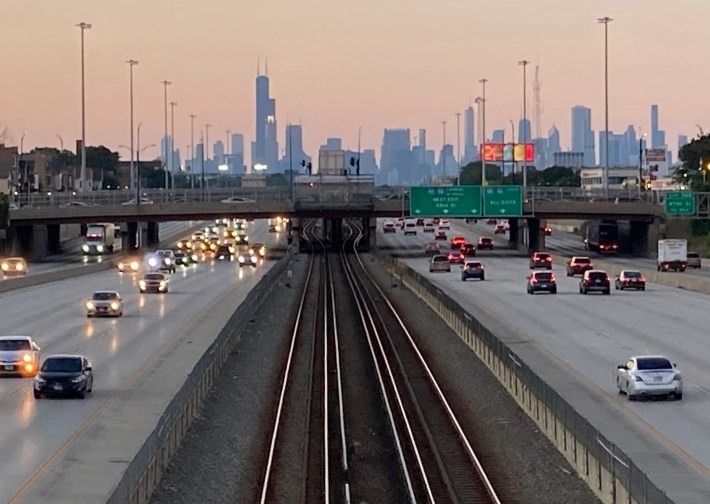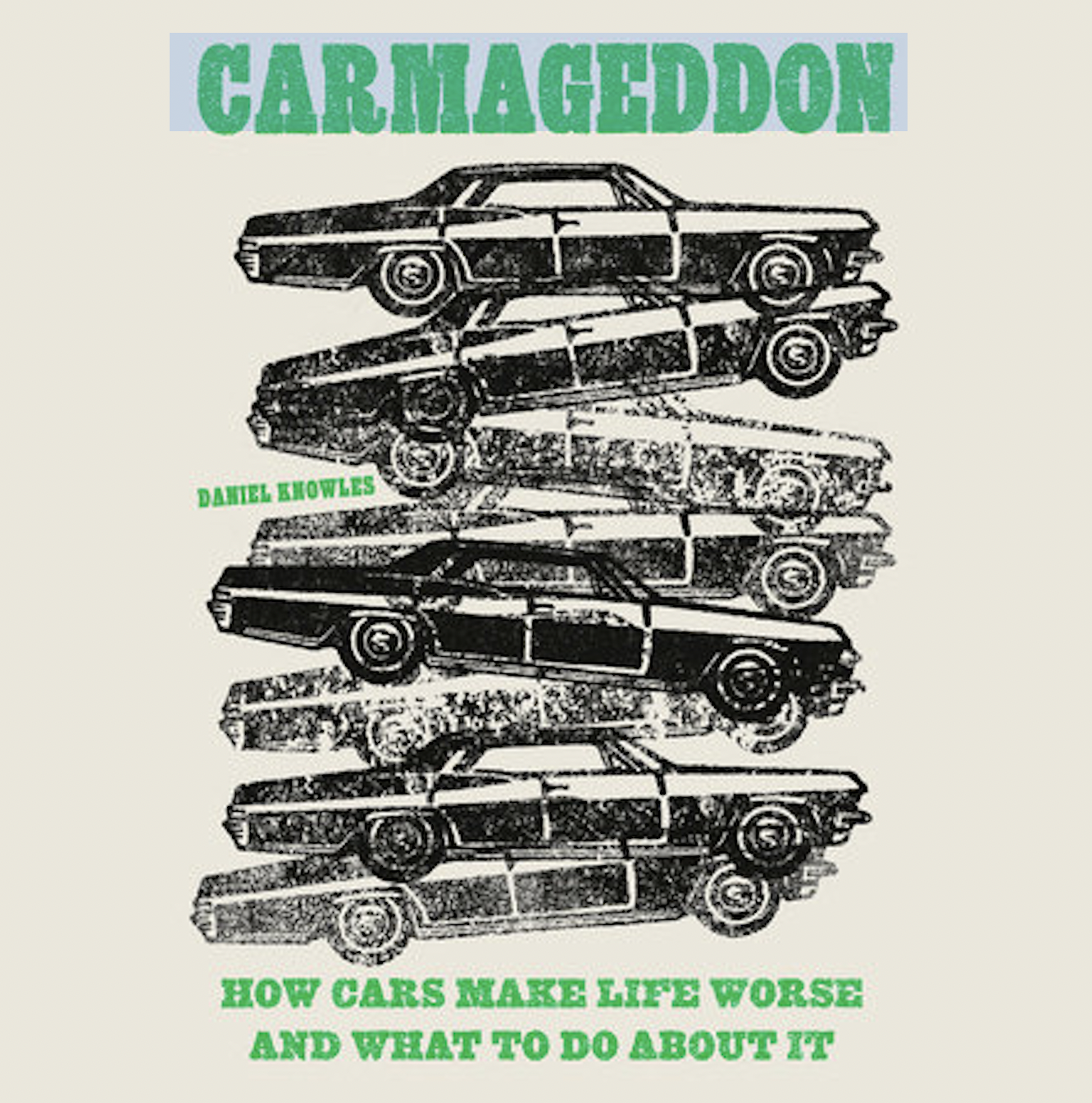Daniel Knowles didn’t learn to drive until he was 26. But instead of finding it helpful to gain that skill, Knowles feels the experience opened his eyes to how much worse off car dependency makes us all, whether we drive or not.
“I don’t think I had appreciated how much cars have set the way in which cities are built all over the world…It is very difficult for people who cannot afford a car to get around. It makes their lives worse, and it doesn’t even make the lives of people who drive that much better. They’re pretty miserable too.”
In Carmageddon: How Cars Make Life Worse And What To Do About It, Daniel Knowles, a Chicago resident and midwest correspondent for The Economist magazine, builds a comprehensive case against cars and the central role we have given them in our society. Carmageddon carefully runs through history to explain how we radically restructured our cities to make room for cars, what we sacrificed in the process, and where we can look to see how to fix these mistakes.
Knowles says the book is not just intended for people like him (and likely many Streetsblog readers) who may not own a car and already support alternatives to driving. He thinks there are many drivers who are frustrated, but who have not had it explained to them how the problems they are dealing with are caused by our decision to prioritize cars.
“The people I really hope will read this book are the people who will think ‘Ok, now I understand why everything has been set up so that I have to live 10 miles away from my office, and so that I am forced to spend $11,000 a year running this vehicle that each day makes me miserable’”
Carmageddon argues that this car dependency was not inevitable. When the first cars were sold, nearly everyone got around by walking, biking, or taking public transportation. The book describes how car owners, who were generally wealthier and more politically powerful, were able to successfully push for dramatic changes to their cities to make it easy to quickly drive anywhere you could want to go. Cities banned pedestrians and children from streets they used to walk down or play in. They widened streets and lifted speed limits to let more cars through more quickly. They demolished entire neighborhoods to make room for freeways. While many of these changes were made in the hope of making lives better, Knowles argues that giving up so much space to expensive, polluting, and dangerous machines had grave consequences.
One immediate effect was to make getting around the city without a car much more difficult. “It’s not inevitable that the alternatives to driving should suck,” Knowles says. “They can be good. But unfortunately, the reason they are not good is because of driving.”
Filling streets with fast, heavy cars makes biking and walking far more dangerous. It also makes streetcars and buses slower, since they have to compete with private vehicle drivers for space. And setting aside so much rooms for roads and parking spots means that everywhere you want to actually go is much further apart, making all trips take longer – even those done by car. As a result, the new streets that were meant to make city life better instead cut neighborhoods off from each other and from downtowns, encouraging people to leave for the suburbs.
Carmageddon also makes it clear that these consequences are not distributed equally. Predominantly poor and/or Black neighborhoods were especially targeted by policies designed to make it easier for typically wealthier, white car owners to pass through as quickly as possible, leaving these communities with more dangerous streets, more polluted air, and less connected neighborhoods. In many cases, isolating these neighborhoods was itself the point, as these changes were used to reinforce segregation, including in Chicago.
“The Dan Ryan was built to stop people from going across from Bronzeville and Kenwood and other African American neighborhoods into the neighborhoods on the other side, and it still achieves that. It is still this physical barrier that makes it hard for people in places like Bronzeville to get to other parts of the city unless they are in a car.”

Carmageddon portrays car dependency as a mountainous problem that will not be easy to fix, and that in some ways is only growing at a global level. Knowles notes that the number of cars is still increasing in every region of the world. But the book also points to places to look to for potential solutions. Cities like Paris and Tokyo show that by investing in alternatives to driving and planning for people instead of cars, even massive, global cities can be pleasant and accessible without any need to drive. Knowles believes that Chicago is well-positioned to learn from some of these examples.
“Chicago has so much low hanging fruit. Chicagoans already drive far less than the average. The proportion of Chicagoans who drive is still quite high (something like 70 percent of households have a car), but the actual distance they go is not that far…What that means is in somewhere like Chicago, a lot of those journeys could easily be replaced.”
In Knowles’ view, much of this can be achieved with relatively easy changes: namely, more robust networks of bike lanes and bus lanes. Especially in a flat, grid-layout city like Chicago, if biking was safe, and buses did not get stuck in traffic, both could become much more viable ways of replacing trips currently made by cars. In addition, Knowles points out that bus lanes could even help ameliorate the current staffing shortage facing the CTA by allowing each driver to provide more service.
“Say [the bus] goes twice as fast. It gets around the route twice as often, which means that it's more frequent. For the same number of buses, the same number of drivers, you’ve got a way more productive system.”
According to Knowles, one obstacle to making this happen is how unrepresentative our political process is when it pertains to transportation issues. “The people who turn up in public meetings are often an older demographic… who are more likely to drive. And they are the people who reject bike lanes, who reject parking spots being taken away, and they're very loud, but they’re not actually all that numerous.”
His advice for people inspired by his book to try to fix this? “I think my advice would be ‘Be louder’, because you are quite numerous. There's more of you than you think.”






